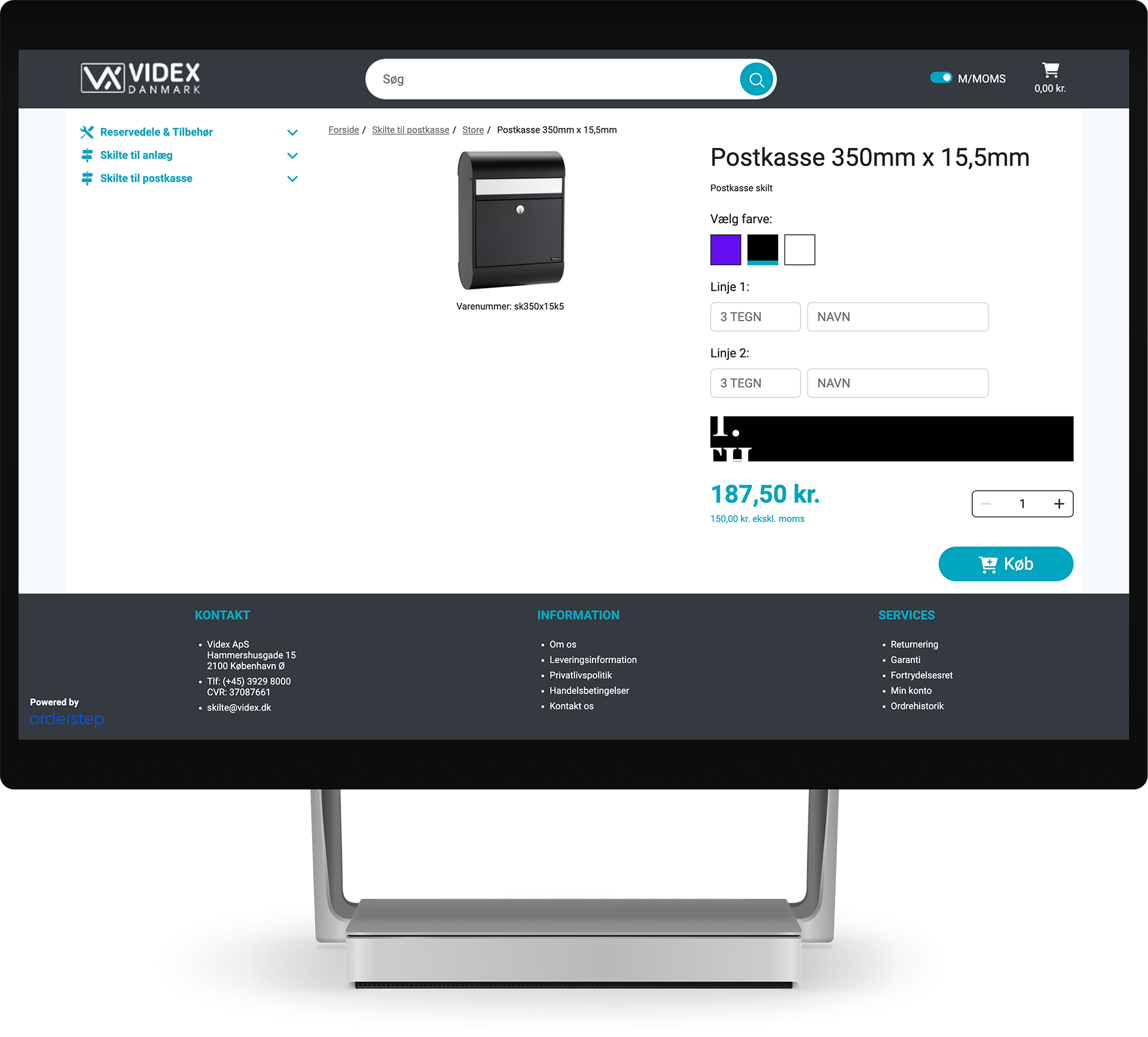The world of software development is evolving at a very fast pace, with emerging challenges and dilemmas. So, you are about to start a new software project in this turbulent 2023, right? Sounds promising! However, a controversial question arises: would it be better to grow your own development team or outsource to a software development service?
One way or another, you will end up with the right decision, as both options are equally great. Before making your final choice, it is crucial to thoroughly weigh the pros and cons of each option and consider the needs and goals of your business. Try to answer these simple questions: What’s the size of your project? How long will it last? What’s your budget estimate?
You will probably need more consideration points to lean toward a favorable decision. In this article, we’re going to compare in-house software development and outsourcing, present their pros and cons, and outline situations where one option might be more suitable than the other. Here we go!
IT Outsourcing: A Brief Overview
Before we delve into the distinction between in-house and outsourced software development, let’s take a look at some eye-opening outsourcing statistics:
- Revenue is projected to grow by 11.07% within the next couple of years
- The IT outsourcing market is estimated to achieve a revenue of $460.10 billion by the year 2023
- According to a recent Deloitte report, 62% of surveyed executives use managed IT services to increase pace of technology and digital transformation
The IT outsourcing market is highly competitive, primarily due to the substantial number of vendors offering IT services to both domestic and international markets. Despite this fact, Ukraine stands out as a leading IT outsourcing destination in Eastern Europe and a renowned hub for digital and technological expertise worldwide.
Ukraine keeps its high position in the global IT market due to its highly skilled IT professionals, sustainable growth, and affordable pricing models. Ukrainian IT experts possess full-working English proficiency and excellent communication skills, fostering seamless collaboration with Western clients.
Understanding In-House Development: Building Internal Software Team
Let’s start by discussing the concept of in-house development itself. In-house development involves building your own team from the ground up, encompassing recruitment, interviews, and onboarding. This internal team, comprising developers, designers, QA engineers, sales, and management personnel, works exclusively for your organization, handling all aspects of the software development lifecycle.
Companies such as Amazon and Paypal prefer having their own software development teams to gain complete project control and customization to meet their specific objectives and requirements. The only downside is the relatively higher cost associated with in-house development.
Pros Of In-House Development
What are the benefits of having an in-house team? Let’s find out!
- More control. Recruiting your own IT specialists provides full control over the entire software development lifecycle. Every stage of the working process is under your complete supervision, allowing you to have a clear understanding of your employees’ tasks and activities. With an in-house approach, you can ensure that QA standards, such as compliance and data security, are diligently followed. Progress updates, project changes, and additional features are all within your reach.
- Hand-picked development team. As you build your team from scratch, it’s up to you to decide who should be on your team and what skills and qualifications they should possess to align with your company’s core values and culture. Fostering a high spirit, teamwork, conducive atmosphere, and collaboration is the key to your project’s success.
- Ease of communication. Another obvious benefit of having an in-house team is the ability to communicate with your workers internally. Even if they don’t sit in the office five days a week, you can still keep in touch with your team remotely. There are no third-party members to discuss project details with, and you can freely discuss confidential or sensitive information.
- Long-term commitment. After developing a product, you can’t be 100% sure that no questions or issues will arise eventually. Employees who have worked on the project can easily provide extended support to the customers and troubleshoot promptly. In contrast, an outsourced team may experience delays in responses and fixes, as they could be occupied with other ongoing projects.
Cons Of In-House Development
There are several drawbacks to in-house development, particularly:
- Covering numerous expenses. Having an in-house team involves both visible and hidden costs (sick leaves, vacation, pension tax, health insurance, business trips, and paid time off). If you want to establish your company as reputable and bring your business ideas to life, it is crucial to provide your employees with favorable working conditions and the necessary equipment for successful project completion.
- Upskilling the team depends on you. Outdated technologies can hinder product growth. You have to stay current with the latest trends and technological advancements so that your company can scale. Investing in employee training influences the bottom line of your business. Be prepared to allocate these expenses, as upskilling your team is essential.
- Possible shortage of talent. Finding a perfect match for a position, someone who can fulfill the required responsibilities, can be challenging. When deadlines are tight, and you need more time to source candidates locally, it can lead to project delays. Deloitte found that 50% out of 500 surveyed executives worldwide identify talent acquisition as a top internal challenge in meeting their organizations’ strategic priorities. According to McKinsey, even high-performing companies struggle with hiring specialists in high-growth areas like AI.
Develop Software In-House If:
- There is a huge talent pool in your area
- Your main specialization is software development
- Projects are not bound by strict deadlines
- There are no budget constraints
- You undertake highly complex products that require long-term development
- You value team spirit and synergy in working processes
- Costly investments in project success don’t scare you
- You prefer to monitor and manage the project’s progress
- You prioritize a high level of security
The benefits of having an in-house team are substantial. You need to have at least a small in-house team that would keep everything under control and set the direction of development in alignment with your overall business goals and strategies. Their deep understanding of your company’s vision fosters informed decisions and a collaborative environment throughout development.
What Is Outsourced Development?
It’s high time we examined the opposite perspective. In contrast to an in-house approach, the outsourced model entails entrusting product development to an external agency. Typically, this procedure is governed by a legally enforceable agreement that specifies the rights and obligations of the involved parties.
In the simplest sense, organizations delegate control over complex development processes to highly qualified specialists who can cope with the assigned tasks in the best way. This enables them to enhance the efficiency of their internal operations while maintaining alignment with the company’s goals and objectives.
Becoming a standard practice, software outsourcing addresses the technology gap while simultaneously reducing operating expenses and related costs. Google and Apple, prominent IT giants, used outsourcing as a strategy to cut down expenses. Similarly, the responsibility for creating web and mobile applications for Slack was entrusted to an external services provider.
Pros Of Outsourcing
What can you expect to gain when choosing to develop your software with an external team? Actually, quite a lot.
- Cost-effectiveness. When outsourcing software development, the only expense companies need to cover is for the provided service itself. There’s no need to manage payroll taxes, medical insurance, training courses, or workspace equipment costs. The burden of bearing these expenses is lifted off your shoulders – isn’t that great? This is one of the primary reasons why companies opt for outsourcing.
- Immense talent pool. Outsourcing can save you the headache that comes with looking through dozens of resumes to find the right candidate in your location. It offers an invaluable opportunity to tap into highly skilled programmers who might not be available in your region. Get ready to be dazzled by the variety of options and limitless possibilities open before you.
- Concentrating on core business activities. Delegating software product development to a specialized service provider enables companies to focus on expanding their in-house team and enhancing management, marketing, and customer service efforts. By entrusting non-core tasks to a service provider for a reduced fee, you can free yourself from labor-intensive activities.
- Faster delivery time. The software is delivered within a short timeframe because the IT vendor is solely dedicated to developing your product. Opting for this strategy enables organizations to swiftly complete each phase of the project, unlike in-house teams that have to manage internal tasks.
- No technology restrictions. When in-house employees lack knowledge of specific programming languages or tools, outsourcing agencies can provide assistance. Companies can reach out to various software engineers well-versed in a range of technologies necessary for their projects. Through partnerships with experienced IT agencies, businesses can stay at the forefront and pursue their goals with confidence.
Cons Of Outsourcing
Listed below are some of the disadvantages of outsourcing.
- Lack of control. You can’t oversee every single step that an outsourced team takes during a specific phase of the development process, as you are not their direct supervisor. Unlike an in-house team that you can communicate with directly, there might be a delay in response from outsourced team members when you reach out via email. Plus, if there are any issues that require fixing, don’t anticipate an immediate resolution; they could already be engaged in another project.
- Time zone difference and communication barriers. If your selection of an IT services vendor happens to be located halfway across the globe, negotiating a mutually suitable time for all involved parties can become challenging due to significant time differences. Language can also act as a barrier between you and the team lead of the outsourced team, especially if their company originates from a non-English speaking country.
- Trust issues. Before finalizing a deal with a third-party developer, it’s essential to execute specific agreements to avoid problems in the future. Entering into a Non-Disclosure Agreement (NDA) and a Non-Compete agreement is a win-win solution for all parties concerned. This approach offers you peace of mind, assuring that granting access to your sensitive information and Intellectual Property (IP) will not jeopardize your business. Failing to take these precautions raises the question: What guarantees are there that the IT service provider won’t collaborate with your competitor concurrently?
Develop Software With External Provider If:
- Your budget is tight
- You lack highly-qualified IT specialists in the field
- Other internal projects require your core team’s attention
- You have a limited amount of time
- You are not sure your in-house development team can cope with new project
- It’s difficult for your team to adapt to new services
- You are experiencing rapid growth
- Your team is overloaded with internal tasks
When there’s a product to be created that requires expertise beyond what you and your company can provide, it would be a smart move to outsource. This enables you to regain focus on your core business while entrusting certain tasks to a team with the ideal skill set to help get the job done. If you find yourself consistently burdened by tasks, it might be time to consider outsourcing and prioritize what truly matters for achieving success.
If you’d like to learn more about how to manage outsourced software development and get the most out of it, make sure to read this article.
In-House vs Outsourced Software Development
Let’s break down the key differences between in-house and outsourced software development to give you a clearer picture.
Cost
Significant investment
Rates depend on chosen region
Expertise
Limited number of qualified specialists
Access to world-class talent
Scalability
Lengthy process
Rapid growth
Speed
Slower development pace
Faster progress with a well-versed team
Confidentiality and security
High protection of proprietary data
Requires signing a non-disclosure agreement
Control
Full control over the process
Less control
Time zone
Same
Different
Communication
Direct/face-to-face communication
Collaboration through different communication channels
Outsourcing vs. in-house app development — what to choose? In reality, many businesses prefer a hybrid model that enables them to leverage the skills of both in-house and outsourced teams for optimal results. Here is some more information on outsourcing types, destinations, and costs.
Why Is Redwerk a Reliable IT Services Provider?
Redwerk delivers web, mobile and SaaS products to clients spanning 22 countries across the globe. Our team of skilled developers, QA engineers, designers, project managers, and business analysts can help with: requirements analysis, custom solutions, architecture, UI/UX design, development, testing, deployment, maintenance, system administration, and support.
Since 2005, Redwerk has completed over 250 custom software development projects for clients across North America, Europe, Australia, and New Zealand. We can help your business scale up market share without breaking your budget.
Wrapping Things Up
So, there you go. Take some time to analyze the provided information and apply it to your project. If you are still hesitating about whether to opt for in-house development or outsourcing, the wise approach would be to put down a list of requirements and choose the option that best suits your business needs.
P.S. Do you want to initiate your project immediately and save development costs? If so, going with an outsourcing service provider is a reasonable solution to consider. Get in touch with us to discover the opportunities available in outsourced development.
See how we helped Orderstep increase subscription revenue by developing premium webshop module



